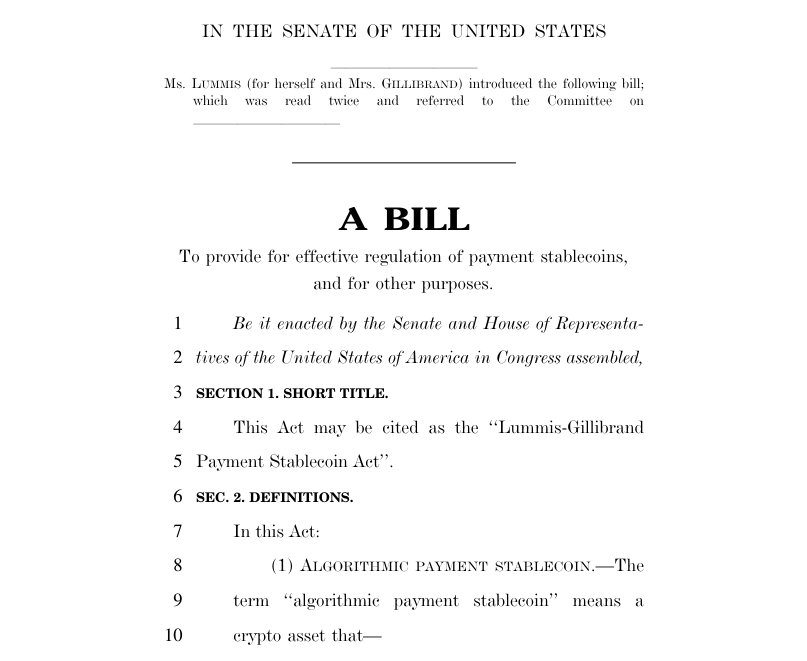In a significant step to ensure regulation and security in the rapidly growing digital finance sector, US Senators Kirsten Gillibrand and Cynthia Lummis have introduced the Payment Stablecoin Act. This legislation, developed over several months, aims to create a robust regulatory framework for payment stablecoins, addressing issues related to their usage and potential risks.
Bipartisan Effort To Tackle Stablecoin Regulation
The Lummis-Gillibrand Stablecoin Act’s introduction signifies a major collaborative attempt from politicians of different parties to tackle regulatory issues surrounding stablecoins. By joining forces, senators understand the importance of encouraging digital finance development while implementing necessary consumer protections and preserving US dollar stability.

Promoting Responsible Innovation And Protecting Consumers
At the heart of this legislation is the goal to foster responsible innovation in stablecoins, all while protecting consumers’ interests. The bill achieves this by imposing one-to-one reserves for stablecoin issuers and creating both state and federal regulatory bodies. This setup aims to bring transparency and accountability to stablecoin operations, thereby increasing trust among users and investors and reducing the risks linked to unbacked or algorithmic stablecoins.
I’m proud to join @SenLummis to introduce the Payment Stablecoin Act.
Establishing regulations for stablecoins is essential for safeguarding consumers, fostering responsible development, and combating money laundering and illegal financing activities.
— Sen. Kirsten Gillibrand (@gillibrandny) April 17, 2024
The legislation takes steps to deal with issues related to unlawful transactions and money laundering in the context of stablecoins. Senator Gillibrand stresses the need for implementing regulations to curb illegal financing activities and preserve the US dollar’s position as a leading currency in the international financial market.

Incorporating Stakeholders And Ensuring Proper Custody Practices
An important feature of the Lummis-Gillibrand Stablecoin Act is that it invites involvement from multiple parties in the regulation of stablecoins. Under certain circumstances, state non-depository trust companies and authorized institutions would be permitted to issue stablecoins, thereby fostering a more diverse and competitive marketplace while maintaining regulatory compliance.
Stablecoins: Addressing Concerns And Building Consensus
The passage of the Lummis-Gillibrand Stablecoin Act is a major development in the regulatory sphere for stablecoins. However, it’s essential to acknowledge that obstacles persist. Critics like Senator Sherrod Brown have raised valid concerns, emphasizing the importance of addressing these issues and fostering agreement among lawmakers.
Despite this new legislation, there is increasing recognition in the US of the need for stablecoin regulation. As debates progress and all parties contribute their perspectives, the goal remains: to establish a regulatory structure that fosters innovation, safeguards consumers, and maintains the stability and trustworthiness of the financial system in the digital realm.
Read More
- LUNC PREDICTION. LUNC cryptocurrency
- BTC PREDICTION. BTC cryptocurrency
- BICO PREDICTION. BICO cryptocurrency
- SOL PREDICTION. SOL cryptocurrency
- USD CLP PREDICTION
- VANRY PREDICTION. VANRY cryptocurrency
- USD ZAR PREDICTION
- NAKA PREDICTION. NAKA cryptocurrency
- SEILOR PREDICTION. SEILOR cryptocurrency
- RBX PREDICTION. RBX cryptocurrency
2024-04-18 10:41